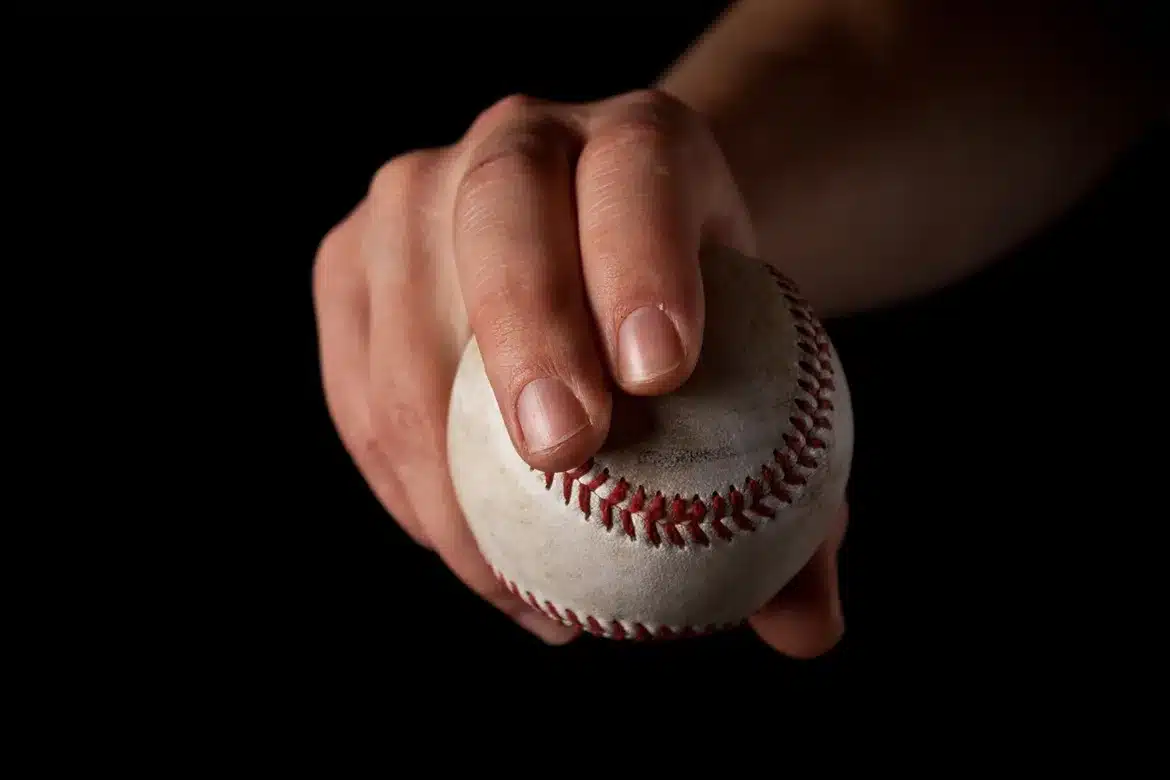Stepping onto the pitcher’s mound with the ball in hand, ready to throw a curveball, can be a thrilling moment in baseball. If you’ve ever wondered, “How to Throw a Curveball: Baseball Pitching Technique,” you’re in the right place.
Let’s unravel the secrets behind this spin-infused pitch and get you ready to add a bit of curve to your game.
Keep reading.
Table of contents
Can Anyone Learn To Throw a Curveball?
Absolutely! Anyone with a passion for baseball can learn to throw a curveball. It’s a skill that takes practice and dedication, but with the right guidance and effort, you can add this exciting pitch to your repertoire.
Whether you’re a seasoned player or just starting, the key is to understand the technique, practice consistently, and work on refining your curveball over time. So, if you’ve ever dreamed of adding a bit of curve to your pitches, go ahead and give it a shot!
You should read: How Tall is Jack Skellington? All the Facts and Details
How to Throw a Curveball
Throwing a curveball in baseball involves a specific technique to make the ball curve as it approaches the batter. Here’s a step-by-step guide:
#1. Grip the Ball:
Start with a comfortable grip. The most common curveball grip involves placing your middle and index fingers along the horseshoe seam of the ball. Experiment with the grip to find what feels right for you.
#2. Hand Position:
Hold the ball deeper in your hand, towards the palm. This allows your fingers to exert more pressure on one side of the ball, creating the necessary spin for the curve.
#3. Wrist Movement:
Focus on your wrist movement. A proper curveball requires a snapping motion of the wrist during the release. Practice this movement to generate the desired spin on the ball.
#4. Body Mechanics:
Pay attention to your overall body mechanics. Maintain a consistent pitching motion to avoid telegraphing the curveball to the batter. Your windup and delivery should be similar to your other pitches.
#5. Practice Regularly:
Like any skill, practice is key. Start with shorter distances and gradually increase as you become more comfortable. Work with a coach or experienced player for feedback and tips to improve your technique.
Remember, learning to throw a curveball takes time and patience. Be persistent, stay focused on refining your mechanics, and soon you’ll be adding a wicked curve to your pitching arsenal.
Also check out this content: 26 Legitimate Ways to Get a Costco Student Membership for Free
Can throwing a curveball be hard on the arm?
Yes, throwing a curveball, like any pitching technique, has the potential to be hard on the arm if not done with proper mechanics or if overused. Here are some considerations:
- Incorrect mechanics, especially in the wrist and arm motion, can lead to unnecessary strain on the elbow and shoulder.
- Throwing too many curveballs, especially without adequate rest, can contribute to arm fatigue and increase the risk of injuries.
- Younger pitchers, whose bones and muscles are still developing, may be more susceptible to injuries from certain pitching techniques.
- Warm-up Properly: Always warm up before pitching to prepare your muscles and joints.
- Rotate Pitches: Avoid relying solely on the curveball. Incorporate a variety of pitches to distribute the stress on your arm.
- Listen to Your Body: If you experience pain or discomfort, take it seriously. Rest and consult with a coach or medical professional if needed.
- Strength Training: Include strength and conditioning exercises for your arm and shoulder to build muscle support.
By focusing on proper mechanics, moderation, and overall arm health, you can enjoy the benefits of throwing a curveball while minimizing the potential strain on your arm.
You should read: What Age Do You Graduate High School?
Conclusion
Mastering the curveball adds a layer of excitement to your pitching repertoire. From understanding the grip to perfecting the spin, the journey of learning “How to Throw a Curveball: Baseball Pitching Technique” is a rewarding one. So, step onto the mound, practice with determination, and get ready to bring a curveball surprise to your next game.
Frequently Asked Questions
While it takes practice, anyone with a passion for baseball can learn to throw a curveball. It’s about understanding the technique and dedicating time to honing your skills.
A curveball has a unique spinning motion that causes it to curve as it approaches the batter. Mastering this spin is what sets it apart from other pitches, adding an element of surprise for the hitter.
Yes, the grip is crucial. The most common grip involves placing the middle and index fingers along the horseshoe seam of the ball. Experiment with the grip to find what feels comfortable and allows you to generate the desired spin.
Practice regularly! Start by focusing on the grip and wrist movement. Gradually increase your throwing distance as you become more comfortable. Work with a coach or experienced player for feedback and tips.
Like any pitch, improper technique or overuse can strain the arm. It’s essential to warm up before practicing, pay attention to your body, and consult with a coach or medical professional to ensure you’re using proper mechanics.
References
- youtube.com– how to throw a curveball
- wikihow.com– how to throw a curveball
- danblewett.com– how to throw a curveball the right way
Recommendations
- 26 Legitimate Ways to Get a Costco Student Membership for Free
- What Age Do You Graduate High School?
- Which Group is a Primary Supporter of Hunter Education?
- How Tall is Trippie Redd? Everything About the Rapper
- How Tall is Jack Skellington? All the Facts and Details
- How Big is 5 Inches? 6 Items with Accurate Measurement






